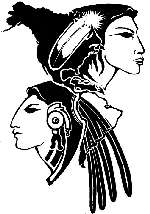The Americas
The Americas are the lands of the Western hemisphere or (generally) the New World, consisting of the continents of North America and South America with their associated islands and regions. The Americas cover 8.3% of the Earth's total surface area (28.4% of its land area) and contain about 13.5% of the human population (about 900 million people). The Americas may alternatively be referred to as America; however, America may be ambiguous, as it is commonly used to refer to the United States of America.
South America broke off from the west of the supercontinent Gondwanaland around 135 million years ago (Ma), forming its own continent. Starting around 15 Ma, the collision of the Caribbean Plate and the Pacific Plate resulted in a series of volcanoes along the border that created a number of islands. The gaps in the archipelago of Central America filled in with material eroded off North America and South America, plus new land created by continued volcanism. By 3 Ma, the continents of North America and South America were linked by the Isthmus of Panama, thereby forming the single landmass of the Americas.
The earliest known use of the name America for this particular landmass dates from April 25, 1507. It appears first on a small globe map with twelve time zones, and then a large wall map created by the German cartographer Martin Waldseemüller in Saint-Dié-des-Vosges in France. Nearby Strasbourg was energized by the Renaissance Spirit of science and innovation. Here the Duke of Lorraine purchased the latest invention of a printing press and recruited a think tank of experts to render a new image of earth as a planet, using the reported findings of European explorers. An accompanying book, Cosmographiae Introductio, explains that the name was derived from the Latinized version of the explorer Amerigo Vespucci's name, Americus Vespucius, in its feminine form, America, as the other continents all have Latin feminine names.
The indigenous peoples of the Americas are the pre-Columbian inhabitants of the Americas, their descendants, and many ethnic groups who identify with those peoples. They are often also referred to as Native Americans, First Nations, Amerigine, and by Christopher Columbus' geographical mistake Indians, modernly disambiguated as the American Indian race, American Indians, Amerindians, Amerinds, or Red Indians. American Indians, sometimes called Native Americans, are descendants of the first people to live in the Americas. They had been living there for thousands of years before any Europeans arrived.
![]() Return to Indigenous Peoples' Literature
Return to Indigenous Peoples' Literature
Compiled by: Glenn Welker
ghwelker@gmx.com
This site has been accessed 10,000,000 times since February 8, 1996.

